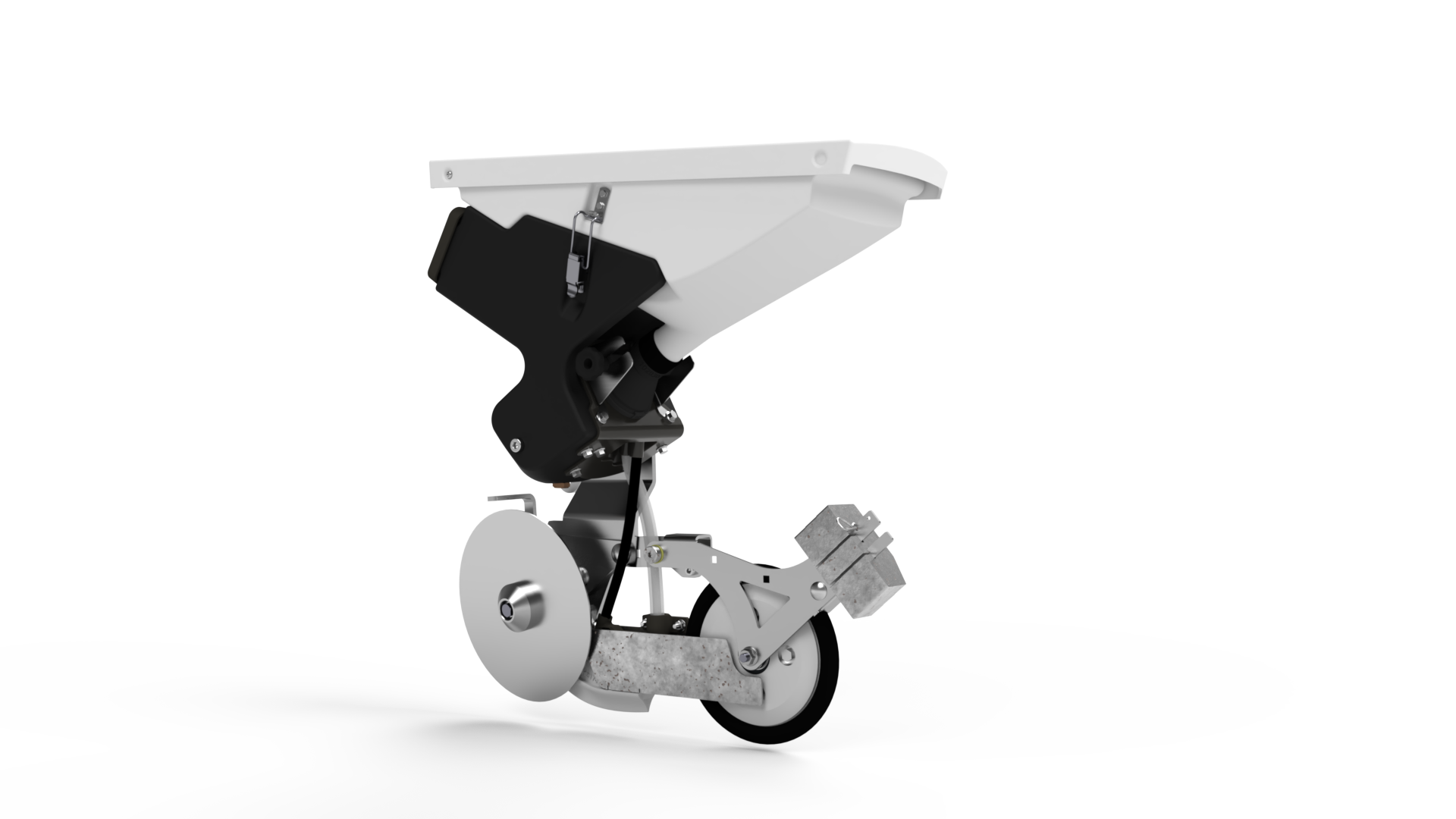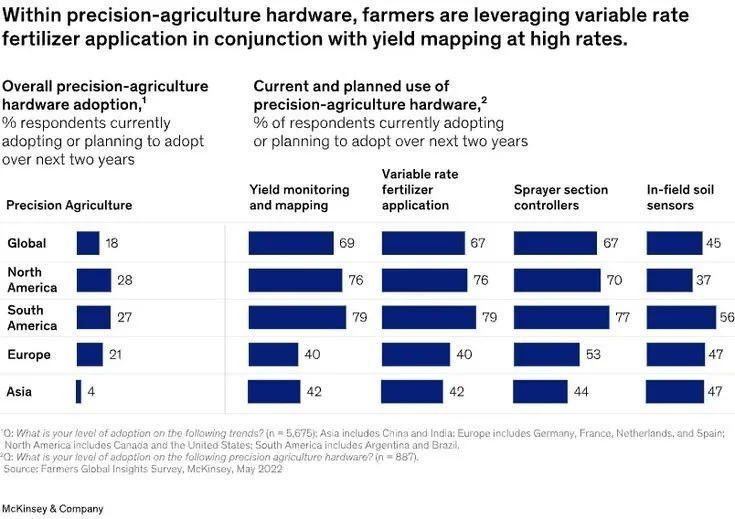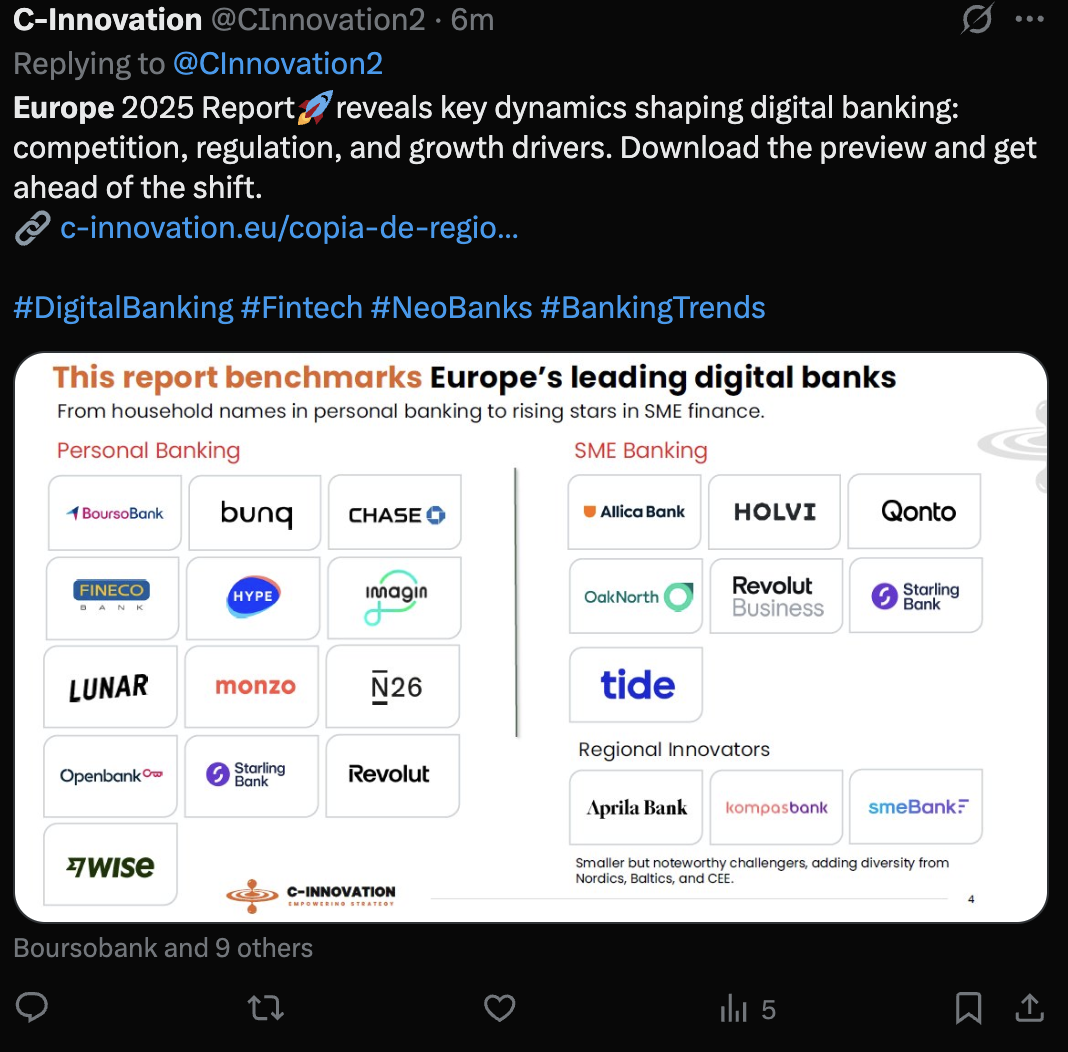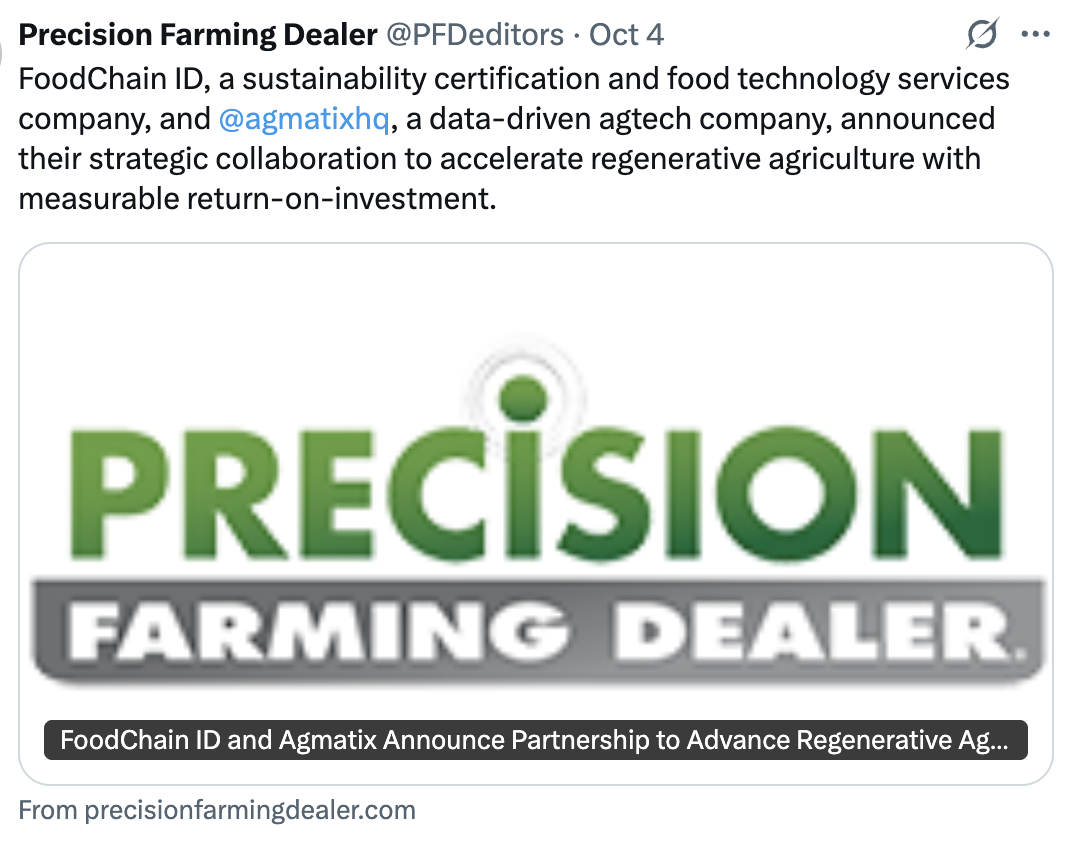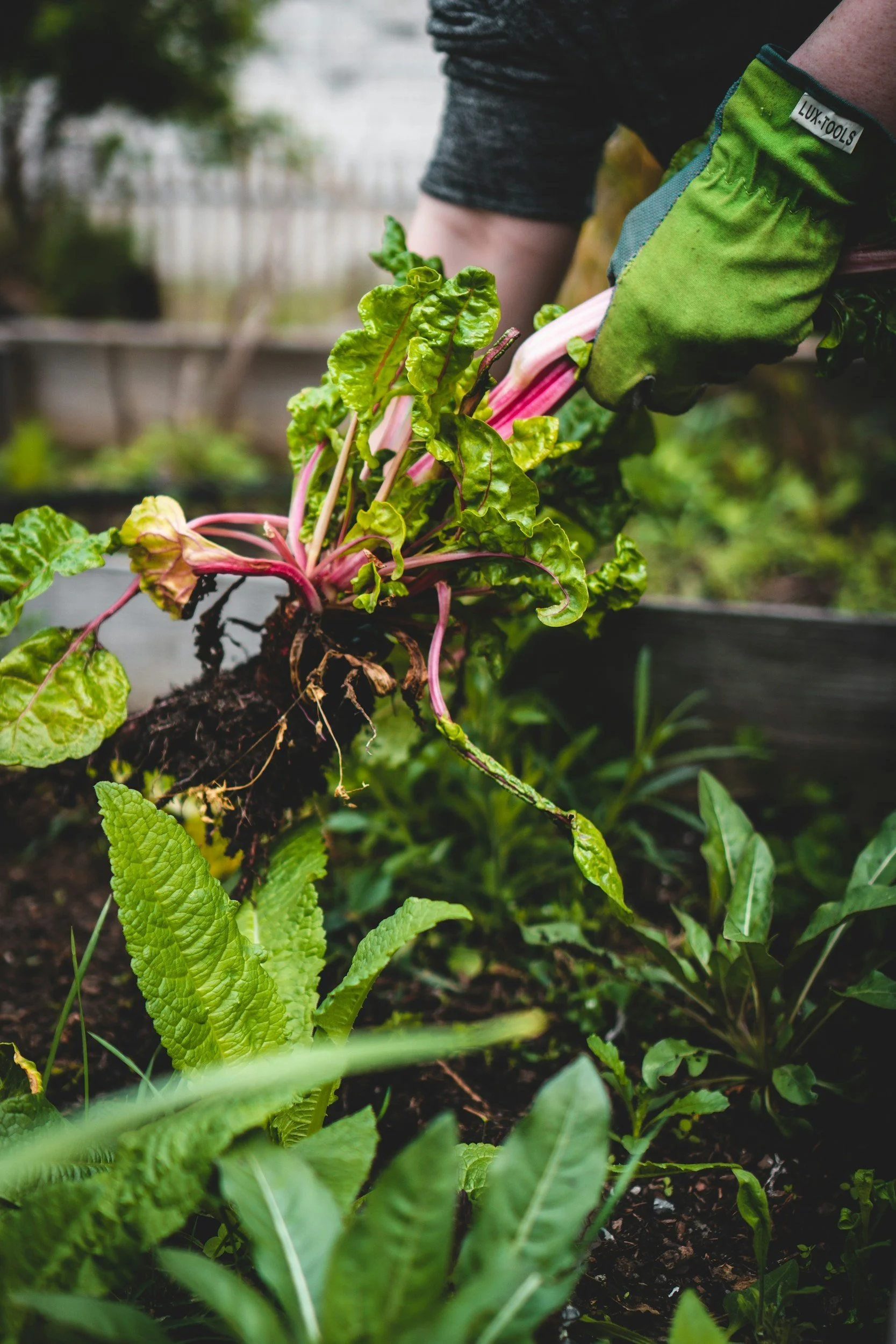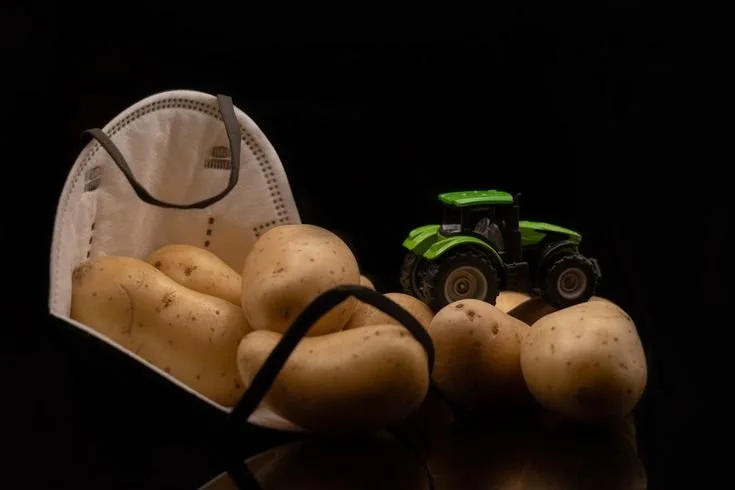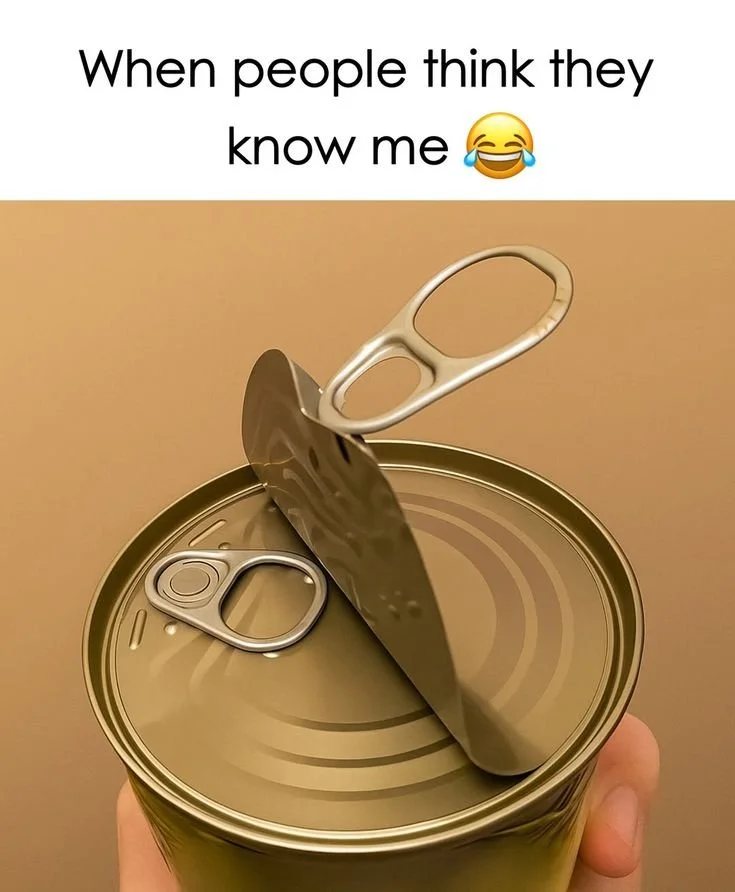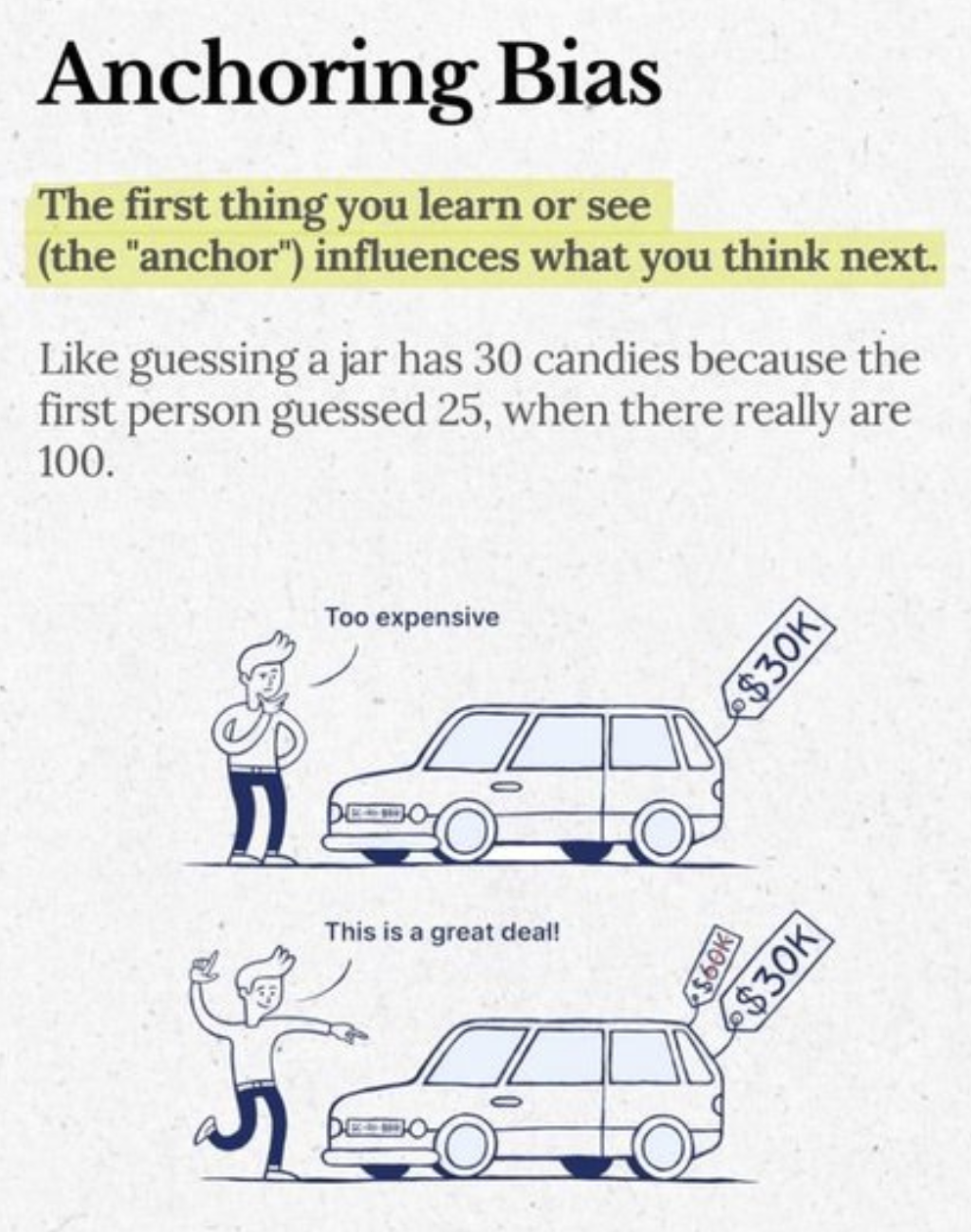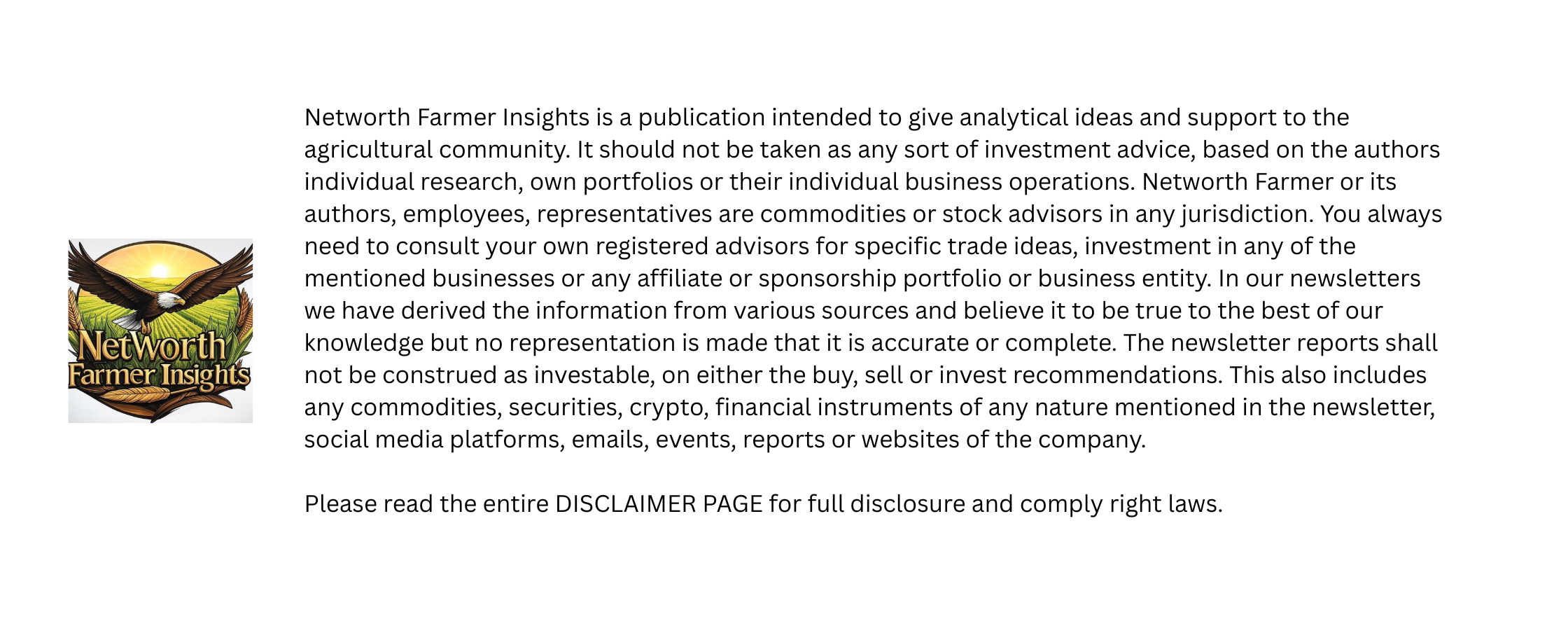Unknown Unknowns
“I can live with doubt and uncertainty and not knowing. I think it is much more interesting to live not knowing than to have answers that might be wrong.”
🚜 New in AgTech
Multi-Crop Robot Problem, Solved!
FarmDroid's new +Seed 14 mm system tackles one of the biggest challenges in agricultural robotics: the ability to handle different crops. The new seeding system for their FD20 platform can now handle seeds ranging from 0.8 mm to 14 mm in diameter. This is a big step up from just sugar beets and onions, as it now includes maize, soybeans, field beans, and chickpeas too.
The Flexibility in Economics
So, here's the deal: farmers can now use the same robot for different crops throughout the season, which really speeds up their return on investment by keeping it busy all year round. The system boosts seeding capacity by up to 20% with quicker seed release intervals and faster robot operation, all while keeping FarmDroid's reliable 8 mm GPS precision intact.
The system lets you customise row spacing anywhere from 25 to 90 cm and can manage single seeding, line seeding or cluster setups. It’s designed to fit your crop needs instead of making you adjust to what the robot can do.
Proven Technology
FarmDroid rolled out eight robots with specific customers during the 2025 season to pinpoint and address any issues before they hit the market. This careful way of validating things really shows how far agricultural robotics has come, just like European farmers have been asking for.
What's the strategic insight? Agricultural robots tend to struggle when they become too specialised. FarmDroid's modular setup keeps the reliable 6 mm system for smaller seeds and adds a 14 mm option, giving farmers the flexibility to pick the right tool for their crop mix instead of taking a chance on machines that only do one thing.
If you're a European speciality crop farmer thinking about investing in robotics, you'll find that FarmDroid's ability to handle multiple crops really shifts how you look at the return on investment. Get in touch with their specialists today to set up systems for the 2026 season. The robots that really pay off quickly are the ones that operate all year long.
-
What is full of holes but still holds water?
Why European Farmers Aren't Buying What AgTech Is Selling
The Adoption Paradox
The figures don't make sense. In 2021, outside investors put $18.2 billion into agricultural food technology, which has grown by 38% per year since 2013. Farm profits were at their highest levels in almost ten years. There is technology. The cash moves. But McKinsey's assessment of 5,500 farmers around the world shows a shocking truth: AgTech acceptance is still very slow, and European farmers are the ones who are most resistant to it.
Europe's Hesitation Has a Price Tag
Did you know that sixty-one percent of farmers in Europe and North America are either using or planning to use at least one AgTech product in the next couple of years? That's the highest rate in the world! But if you look a little closer, that excitement starts to fade away. European farmers are facing three major challenges: high costs, which are a big concern for 48% of them, followed closely by unclear ROI, and then there’s the complexities in setup and use that 32% of farmers are dealing with.
When you look at South America with a 50% adoption rate and Asia sitting at just 9%, a clear pattern starts to show: as the agricultural sector gets more developed, farmers tend to be more sceptical about the promises of technology.
The Trust Deficit
So, here's something that should really raise eyebrows for every AgTech entrepreneur in Europe: Half of farmers around the world aren't ready to spend anything on farm-management software solutions. Nothing at all. This isn't just a matter of cost—it's really about trust. Back in the day, when input manufacturers rolled out big discounts or even free digital platforms, farmers started to really think about whether the newer options were worth their investment.
What's the minimum ROI farmers are looking for before they think about adopting it? Three to one. Right now, the solutions we have are having a tough time showing real impact. It’s tricky because productivity gains get mixed up with things like extreme weather, which makes it hard to see any real improvements.
Here's what the data actually reveals
Farm-management software is leading the way with a 21% adoption rate, while remote-sensing and precision agriculture hardware come in next at 15%. It’s interesting to note that the technologies crucial for Europe’s climate future, like sustainability-related tech, automation, and robotics, are only seeing about 5% adoption right now. What's even more concerning is that the expected growth for established categories over the next couple of years is just 4%, and for automation, it's only 2.5%.
Large farms over 5,000 acres show 81% willingness to adopt, dropping to 76% for medium farms (2,000-5,000 acres) and just 36% for small farms under 2,000 acres. The European AgTech market is bifurcating: large operations embrace technology while small and medium farms—the backbone of European agriculture—remain skeptical.
The Upcoming Reckoning
It seems like a lot of AgTech deals are happening mainly in the Seed and Series A rounds. It seems that a lot fewer startups are getting that later-stage funding or making it to the public market, which hints that they might be struggling to grow the customer base they need to really scale up. We've got the funding in place. The technology operates well in controlled conditions. It seems like the business model just isn't working anymore.
Next week, we're going to dive into the five strategic trends that McKinsey highlights, which could really help us unlock the adoption code. You might be surprised by the solutions they suggest!
📢 Digital Pasture
👩🌾 Tending Dreams
The No-Till Farmer Who Ditched Chemistry for Biology
Upon initial observation, Michael Thompson's planter setup in Almena, Kansas appears to be quite standard. It features a liquid-in-furrow system that is directly connected to the closing discs. However, the information passing down those connections is indicative of a subtle shift towards regenerative agriculture, which European AgTech companies would do well to keep an eye on.
Chemistry Is Underappreciated
"I'm not running any fertilisers, it's just row support, some biologicals, some compost and things of that nature," says Thompson. He is using biological solutions to provide seedlings with "a happy, healthy place" to grow instead of the conventional NPK starting fertilisers.
No, this is advanced soil biology management; it has nothing to do with hippie farming. Soil research is finding more and more evidence that biological activity, rather than chemical treatments, can mobilise nutrients more efficiently in healthy no-till systems; this is particularly true during the establishment phase, which is why Thompson's approach takes this into account.
Europe in Perspective
In the face of mounting demand to decrease synthetic inputs and ever-tightening fertiliser rules, Thompson's strategy presents a tempting alternative for European farmers. Biological starters solve the problem of nutrient loss, which is a major component of the EU's Farm to Fork plan, which aims to reduce nutrient losses by half while keeping soil fertility intact.
A huge amount of money can be made from this. Because they are compliant with regulations and work well with current planter infrastructure, liquid biologicals are quickly becoming the preferred beginning fertiliser. All that's required is a complete reevaluation of the term "feeding" a young plant, rather than a replacement of any machinery.
The Importance of This for Market Change
As part of a larger shift, Thompson stands for the pioneers. The need for biological alternatives to standard starters will rise as no-till practices extend across Europe, spurred by erosion concerns and carbon sequestration incentives. Success in farming will go to farmers who have a firm grasp on soil biology, not necessarily the most advanced chemical knowledge.
The signal has been sent to AgTech companies: in the future, crop nutrition solutions will not only nourish plants, but also the biological processes that feed plants. That calls for new research and development, agronomic support, and farmer education because the value offer is so distinct.
Rather from being idealistic, Thompson's "natural" approach is a practical response to the changing face of modern farming as a result of economic, regulatory, and agronomic realities.
🌍 Fields & Frontiers
Goldoni Tractors Faces a Third Ownership Change: Goldoni, Italy's historic tractor manufacturer situated in Carpi (Modena), may shortly undergo its third ownership change in a decade. According to Informatore Agrario, the labour union CGIL Modena has confirmed that Keestrack is in advanced talks to sell the company to a new Turkish investor. While details are kept private, unions emphasise the importance of keeping production local, conserving jobs, and revitalising the Goldoni brand. Goldoni's ownership has already changed twice, from China's Lovol (2015) to Belgium's Keestrack (2021), indicating continuous turmoil in Europe's specialised tractor sector. Visit Agrario.it for more on this development.
Grapes, Gigs, Glory: The winding alleyways of Montmartre, a neighbourhood in Paris, come to life every October for a festival that brings together history, culture, and wine. Involvement of the hilltop vineyards in the Fêtes des Vendanges de Montmartre (October 8–12) goes much beyond a simple harvest celebration; the custom dates back to the 12th century. Parades, tastings, music, and art flood the neighbourhood, luring Parisians and visitors from all over the world, even though the vineyards are modest nowadays. Hidden among the merriment and clinking glasses is a tradition that has always been an integral part of Montmartre, even before it gained fame as an artists' area. But wait, there's more—we're not merely celebrating grapes. The vine symbolises togetherness, strength, and individuality, and this festivity honours those qualities. Wondering how Montmartre manages to retain its grape vibe in the midst of contemporary Paris? Discover more on Paris Jetaime and uncork the story.
What You Need to Know About Corteva’s Big Shake Up: Corteva Agriscience is taking a big step that might change the game for farming in the future. The agritech giant just made a big announcement: they’re splitting up their seed business from their crop protection operations. This move is about more than just reorganising the company. For farmers and agribusiness stakeholders across Europe and beyond, the shift raises critical questions: how will this new structure affect innovation pipelines, pricing strategies, and access to cutting-edge technologies? Corteva's decision is really significant for global agriculture, especially with all the pressure from climate change, new regulations, and increasing costs for inputs. It's a crucial time for the industry. Some folks think that this clearer focus will really boost efficiency and help with specialised growth, but others are concerned about it leading to market dominance and affecting competition. So, what does this split actually mean for the future of seeds, sustainability, and crop protection? Dive into the full story here to find out.
Crypto with Confidence: In such a volatile environment, risk management is everything. Diversifying across different assets instead of putting all your capital into a single coin or project is prudent. As an investor, one needs to maintain a clear investment plan with defined goals, timelines, and exit strategies. Most importantly, avoid impulsive decisions driven by hype or fear—these are the quickest paths to loss. If you're an AgTech professional looking into cryptocurrency investments, make sure to prioritise security above all else. It's important to mix things up in your portfolio and stick to your plan—steering clear of those snap decisions is crucial for achieving long-term success. Check out more on Investopedia.
2025; A Challenging Year for European Pepper Growers: It's been a tough year for pepper growers in Europe in 2025. Even with more supply than usual, market prices have dropped significantly, putting pressure on profit margins. The chilly and rainy spring really put a damper on pepper growth, leading to lower yields. Even though some producers turned to greenhouses to shield their crops, they still faced challenges from frost damage and the unpredictable weather, which affected their overall production. If you're a European pepper producer looking ahead to 2026, it's super important to keep an eye on market trends and tweak your farming methods as needed. Focussing on controlled environments and emphasising quality might just give you that competitive advantage in a market where price really matters. Keeping up with supply trends and tweaking strategies will be key to handling the ongoing ups and downs in the European pepper market. These insights are here to help growers and traders make smart choices in a tricky market situation. Visit gfactueel for more on this.
-
A Sponge.

